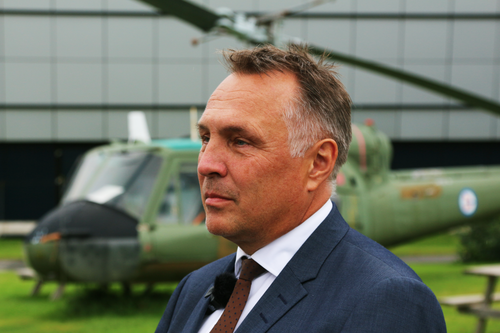All Currencies Will Be Stablecoins By 2030: Tether Co-Founder
Authored by Brian Quarmby via CoinTelegraph.cvom,
Tether co-founder Reeve Collins expects “all currency” to become stablecoins by 2030 as part of a broader shift that will see all forms of finance go onchain.
“All currency will be a stablecoin. So even fiat currency will be a stablecoin. It’ll just be called dollars, euros, or yen,” said Collins in a wide-ranging interview during Token2049 in Singapore.
“A stablecoin simply is a dollar, euro, yen, or, you know, a traditional currency running on a blockchain rail by 2030,” he added.
Collins argues that stablecoins will be the primary method for transferring money within the next five years, as the benefits of tokenized assets have become too compelling for traditional finance to ignore.
“Probably before that, because you’re still going to use dollars. But it depends on what your definition of stablecoin is. The definition of stablecoin is essentially that you’re moving money on a blockchain,” he added.
US crypto shift was the best thing to happenCollins said that the best thing to ever happen to the crypto market was the positive “shift in stance” toward the sector by the US government this year.
Tether co-founder Reeve Collins. Source: Cointelegraph.
He argued that many large TradFi firms were too afraid to enter the industry out of fear of government scrutiny, and while there is still some gray area surrounding the industry, it’s a very different ball game these days.
The Tether co-founder stated that this shift has opened the “floodgates,” with the traditional finance world scrambling to enter the crypto sector and blockchain-based stablecoins being a key focus due to their inherent utility.
“Every large institution, every bank, everyone wants to create their own stablecoin, because it’s lucrative and it’s just a better way to transact. And so those floodgates are open, and what it’s going to lead to is that soon, there won’t be CeFi and DeFi,” he said.
“There’ll be applications that do things, move money, give loans, do investments, and it will be a mix of the kind of the old, traditional style investments, and then the DeFi types of investments.”The tokenization narrative is strong
Collins said tokenized assets offer far greater transparency and efficiency than non-tokenized assets — given that they can be moved quickly across the globe without middlemen — which in turn offers more potential upside.
“That is why the tokenization narrative is so big, because everyone realizes the increase in the utility that you get from a tokenized asset versus a non-tokenized asset is so significant that even the same two assets, just once they’re moved onchain, since the utility increases, that means the return increases.”
However, Collins acknowledged there were also risks to such a monumental shift in global finance, such as the security of blockchain bridges, smart contracts and crypto wallets.
Crypto hacks and social engineering are also key issues that need to be addressed, he said, though he emphasized that overall levels of security are “improving.”
“And so the old trade off is still going to remain there… which is if you want to be fully in control … you can do that, but it’s technically complex,” said Collins.
“If you want to trust a third party like you do traditionally with banks, there are a lot of those services like the custodial versus non-custodial, so that those services will get more robust, and people will have more options moving forward. So yes, there are always risks in technology,” he concluded.
Tyler Durden Sat, 10/04/2025 - 09:20


 Norway's defense minister. Source: High North News
Norway's defense minister. Source: High North News Source: Forsvaret
Source: Forsvaret
Recent comments